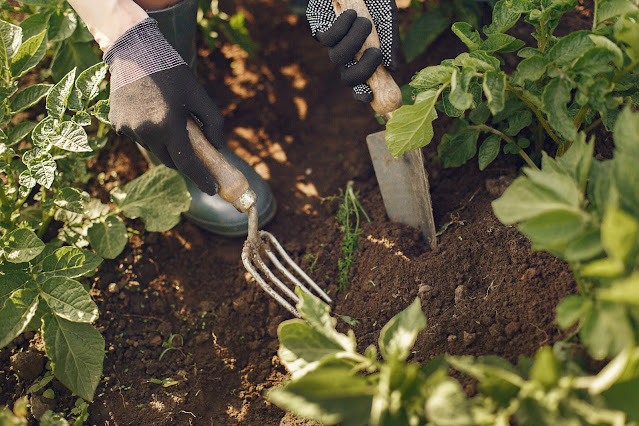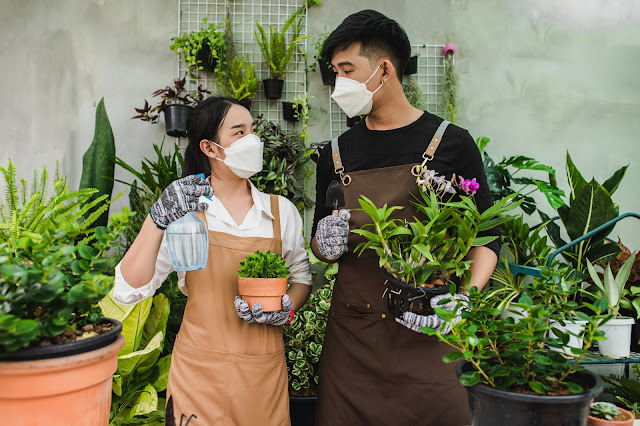 |
Determine and improve the garden soil |
If plants are not growing vigorously, this can be due to the garden soil condition and a lack of fertilizer. There are ways to sustainably improve the soil.
Whether roses, hedges, or vegetables - all plants need optimal soil conditions for healthy and vigorous growth. Because not every plant grows in every soil and very few garden owners find the ideal garden soil at home. But there are a few ways to improve the soil.
But first, the soil conditions must be determined. There are roughly three forms:
sandy soils ("light soils"),
Loamy/sandy soils ("medium-heavy" or "humus-rich soils")
Clay soils ("heavy soils")
Determine the soil type with a simple trick
To determine this, form some moist garden soil into a ball in your hand and then try to roll it into a "sausage". If this is not possible and the soil has a crumbly structure, the soil is sandy. If the sausage can be shaped easily and the soil is smooth but not sticky, the soil is clay/sandy. If the sausage can be shaped easily and the soil is smooth and sticky, it is clay soil.
Clay/sandy soil is the ideal garden soil
The ideal garden soil is crumbly, well-aerated soil that can hold enough water is easy to work with, and contains enough nutrients. As a rule, this is a mixture of sand, loam, clay, and humus. Clay/sandy soil is loose, retains both water and nutrients, and is easy to work with. The air circulation in the floor is optimal and the floor heats up quickly.
Sand and clay soil can be optimized in this way
Loamy and sandy soils can be improved by various measures. Although the water drains well in sandy soils, it is not stored for long. Especially in summer, it can quickly become dry. Clay or clay mineral powder can be added to increase the water storage capacity of the sandy soil. Adding leaves or compost and mulching also improve soil properties. Plant manure, such as that made from stinging nettles, supplies the soil with an organic fertilizer in summer.
Loamy soils store a lot of water and therefore tend to waterlog. They are very dense, making it difficult for air to get into the soil and the roots of the plants. In addition, the heavy soil does not warm up until late in spring, and plant growth begins relatively late. The ground should therefore be dug up - preferably in autumn. In summer, loosen the soil regularly with a rake. To improve the soil, it is advisable to incorporate compost and sand.
Soil analysis for the right fertilizer application
Even under ideal conditions, this soil needs to be fertilized occasionally. The soil's nutrient supply can be checked with quick tests from garden retailers. For example, it can be avoided that the supposedly intact soil has too high nitrate values. You can also determine the pH value yourself with a quick test. Many plants prefer a pH between 6 and 7, while some plants like rhododendrons like it is a bit more acidic.
An analysis by a laboratory is recommended every three to five years. This provides information about the pH value of the soil and about the main nutrient elements lime, potash, phosphorus, and magnesium. The best time to do this is early spring, as that is when the plants will sprout again and may need nutrients. An alternative time is after the fall harvest. It is also a good idea to have a soil analysis carried out if you have problems with your lawn.
What to look for in a soil sample
Ideally, the soil samples come from different parts of the area to be examined, resulting in a mixed sample. So if you want to know the values of the vegetable patch, you can take samples from different places. If there are problems in a specific area, for example,, because a plant is no longer thriving, the sample is only taken from there. Soil samples should always come from areas that are used uniformly, such as a vegetable garden, flower bed or lawn. Depending on what the area is used for, the depth of sampling varies:
Lawns: 10 to 15 centimeters
Vegetable garden, fruit trees/shrubs: up to 30 cm
Each lab sample should contain about 500 grams of soil and no plant debris, fertilizer, or rocks. Bags are suitable as packaging, which can also be labeled with the names of the cultures growing there. In this way, the laboratory can give an exact fertilizer recommendation. Private providers such as garden centers, but also recycling centers, or some laboratories of the agricultural examination and research institutes of the federal states (LUFA) offer soil analyses that cost up to around 50 euros.
Surround or loosen the soil?
There are different opinions about how the garden soil should be worked. In addition, both digging and loosening with a cultivator or cultivator have advantages and disadvantages. When digging up, larger amounts of manure or compost can be worked into the soil and thus provide the roots of the plants with nutrients. On the other hand, the balance of the soil structure and thus the effect of microorganisms is inhibited by digging.
When cultivating, only the top layer of soil is moved and the soil structure is largely retained. On the other hand, the fertilizer is not introduced so deeply into the soil and it is more difficult to reach the roots.
If you want to save yourself the strenuous loosening of the soil, you should ensure that as many earthworms as possible live in the garden. The worms can be bred with little effort and ensure loose and nutrient-rich soil.
Green manure in autumn provides nutrients
Green manure is recommended to improve the soil naturally. Suitable plants such as clover, rapeseed, sunflowers, yellow mustard, lupins,, or phacelia (bee friend) are planted or sown for this purpose. When they are fully grown, they are simply incorporated into the soil. Advantages: The formation of humus is supported, the washing out of plant nutrients and soil erosion is prevented. In addition, green manure prevents unwanted, fast-growing weeds and promotes the water storage capacity of the soil.
Sow frost-hardy plants from August to October, as they green the otherwise open garden ground in winter. In autumn they use residual nutrients in the soil that would otherwise be washed out.
Fertilize with horn shavings
In addition to compost and green manure, horn shavings are among the most popular organic fertilizers. These are crushed horns and hooves of cattle. The relatively fine horn meal can be applied all year round, and the nutrients are quickly available to the soil. Coarser horn shavings supply the soil with nutrients for longer, but only after about three months.







.png)
Great research
ReplyDeleteWell Defined, https://www.purelifebag.com/
ReplyDeleteBest Soil in Canada
ReplyDelete